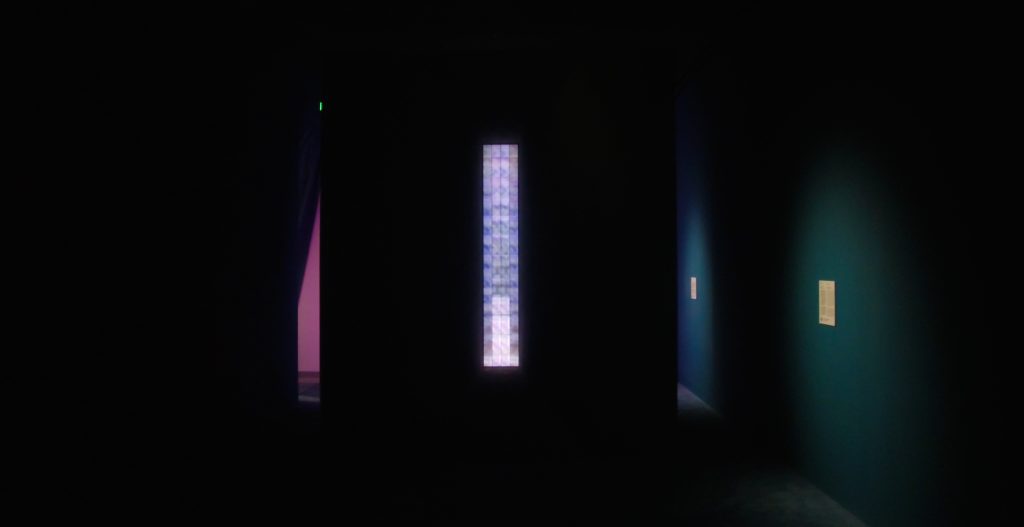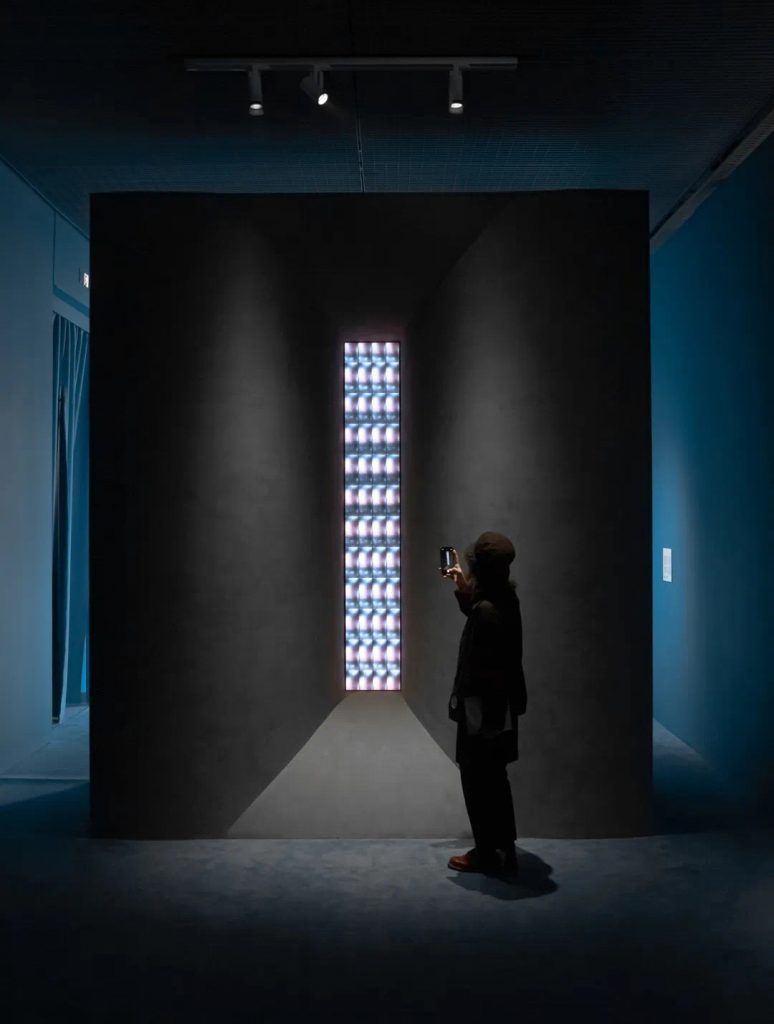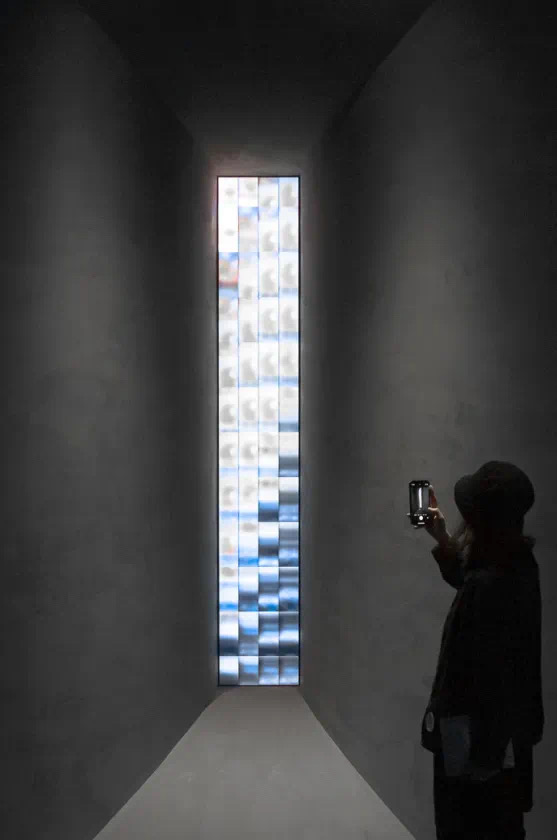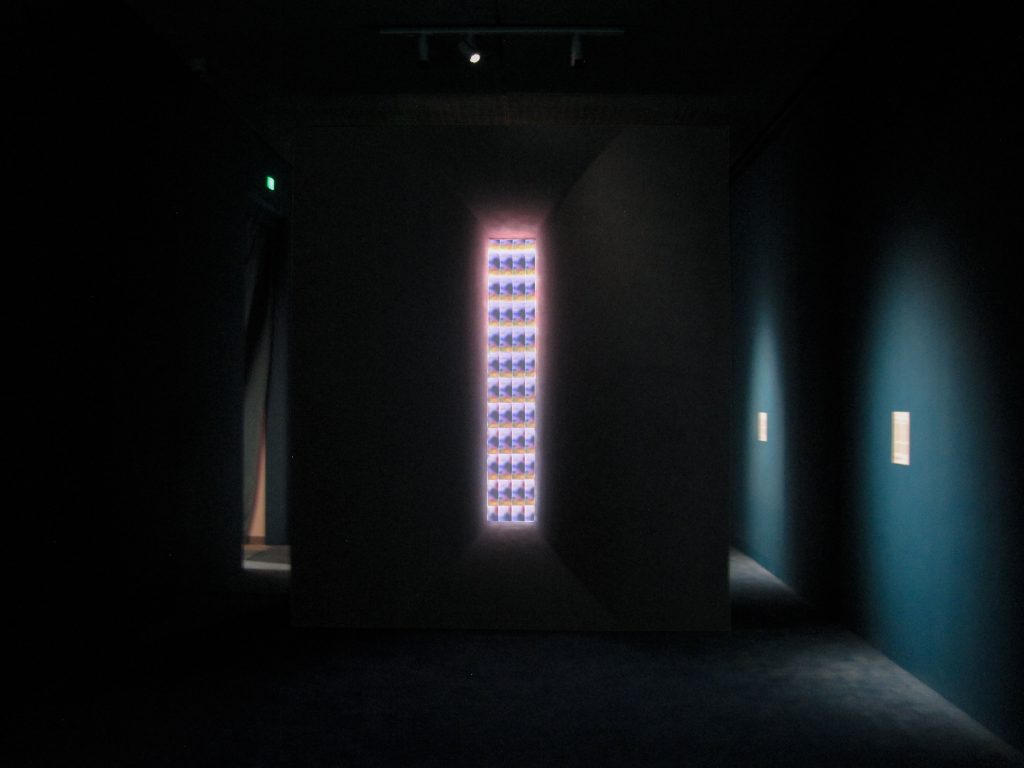



Reverse-rendering
2022,58:9 ultra-narrow display, digital video, specially shaped plasterboard
Commissioned by UCCA Center for Contemporary Art
In the field of digital image production, “rendering” refers to the process of transforming abstract data into an image that can be presented on a screen. In Reverse-rendering, Payne Zhu attempts to capture a widespread and general form of basic rendering: image is retrieved by an Internet platform through a recommendation algorithm, transmitted through a network, received by a terminal device, and generated on the user’s screen. The speed of this rendering reflects current computing power and transmission efficiency, yet it is in constant competition with another form of speed -the speed of finger scrolling across the screen. With a flick of the finger, users can choose, read, and watch new content, maintaining a constant influx of images and unbroken rendering. When finger speed exceeds rendering speed, display errors such as distortion or frozen images occur. The generation of a faulty image can be regarded as inverse rendering, arising from the gap between bodily and technological speed.
The artist has recreated this process of inverse rendering in the form of an installation. The screen appears squeezed by structures on both sides, becoming a thin strip. The artist collected video materials from platforms such as TikTok, blurred them, disassembled them frame by frame, and rearranged them into indistinguishable color strips. On the screen, they appear as if an invisible finger is scrolling upward. These indistinguishable pictures connect and recombine into a dynamic video like an endless and turbulent flow of information, flowing upstream propelled by the tension between body and machine.
逆–渲染
2022, 58:9 特窄显示屏、数字影像、异形石膏结构
由 UCCA 尤伦斯当代艺术中心委任
在数字图像生产领域,“渲染”指将本身并非图像的抽象数据,转变为可以在屏幕上呈现的图像的过程。在《逆-渲染》中,佩恩恩试图定位一种广泛存在且更为广义的“基础性渲染”:图像首先由互联网平台通过推荐算法调取,经由网络传输,最终由终端设备接收,生成于用户的屏幕之上。这一渲染的速度反应了当下的信息计算力与传导效率,也无时无刻不在与另一种速度抗衡—手指的滑动速度。随着手指的飞速上滑,用户持续地筛选、阅读、观看互联网内容,以此维系着图像的不停涌入和渲染的不断进行。当手速超越渲染速度,传输至屏幕前的图像则会发生扭曲、失真或卡顿等一系列显示故障,而这种故障波纹的生成不失为一种逆向的渲染,在身体与技术的两种速度纠缠的间隙中应运而生。
艺术家在这件影像装置作品中试图再现 “逆渲染”的过程:屏幕仿佛受到两侧结构的挤压,变为细长的一条。艺术家从抖音等媒体平台搜集了众多影像素材,将其重组,排列成难以辨别的彩色长条。仿佛存在一只无形的手指正不断地向上滑动屏幕,而这些无法辨别的画面在上移中被串联,重新组合成动态的影像,如同一条无限翻腾、波纹汹涌的信息之流,在身体与技术的角力之间逆流而上。